This Remote Resort in Canada Is Working to Preserve Indigenous Culture Through Hospitality
Klahoose Wilderness Resort, owned by the First Nation of the same name, is on a mission to save their culture through hospitality — and share their slice of off-the-grid paradise, too.
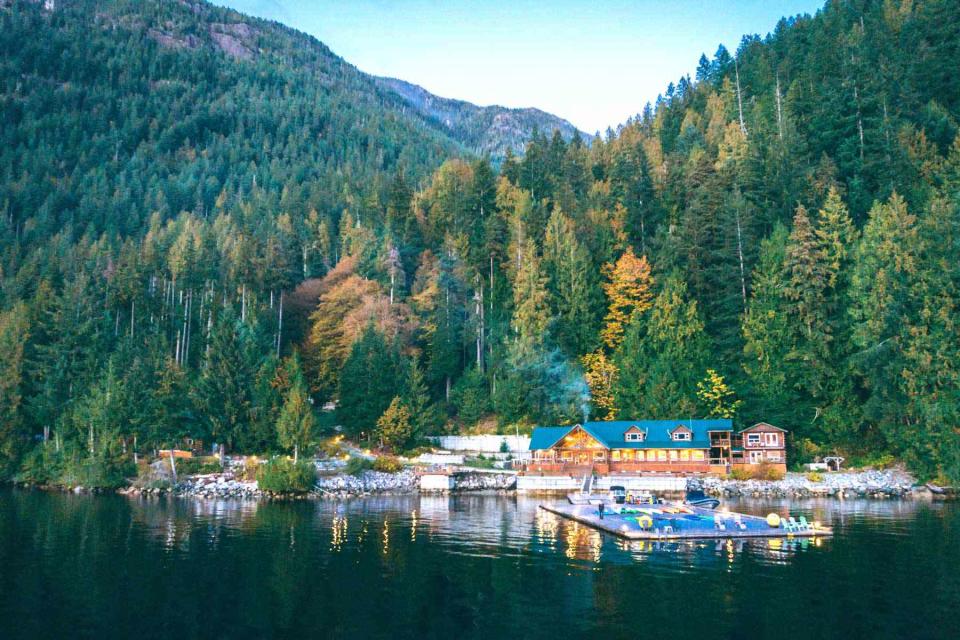
Courtesy of Klahoose Wilderness Resort
The sky was a tapestry of cotton candy pink clouds that deepened into lavender, mirrored on the still saltwater of British Columbia’s Homfray Channel, as my husband and I gathered with a dozen Canadians and Europeans around a smoking fire pit. "Fire is the best way to connect with the ancestors," said Klemkwateki “Randy” Louie, explaining the First Nations smudging and brushing ritual to come. Louie is a Klahoose cultural interpreter, grizzly bear guide, spiritual dancer, and all-around gentle soul working in this new kind of high-end resort.
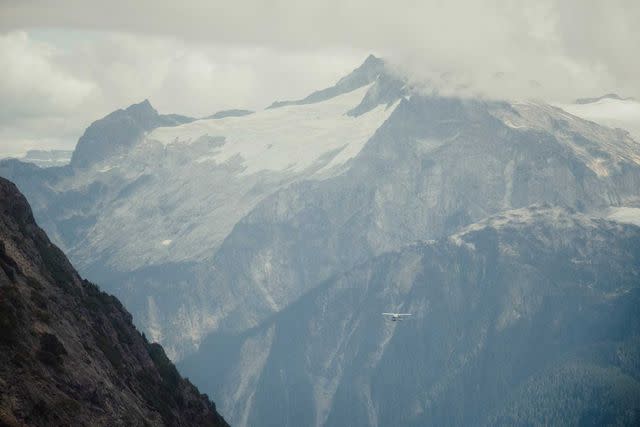
Courtesy of Klahoose Wilderness Resort
One by one, we each took up, spread out our arms, and closed our eyes. Two First Nations staff members worked in tandem — one sweeping cedar branches down and away from my center, head to toe; the other using a feather to waft burning sage across my back. Beautifully scented, the experience felt gentle and spiritual, concluding with a tobacco offering to our ancestors and Lummi song with drumming.
There are resorts designed to deliver pure indulgence, others purpose built for adventure, and still more conceived for foodies, families, wildlife lovers, or wellness seekers. But Klahoose Wilderness Resort works to revive and protect a culture at risk of being intentionally extinguished over generations. Envisioned by the former Klahoose First Nation chief, Kevin Peacey, the resort aims to stimulate social, environmental, and economic reconciliation, as well as deliver employment and healing to Indigenous people. It also happens to be in an environment so magnificently beautiful that it deserves to be immortalized in poetry.
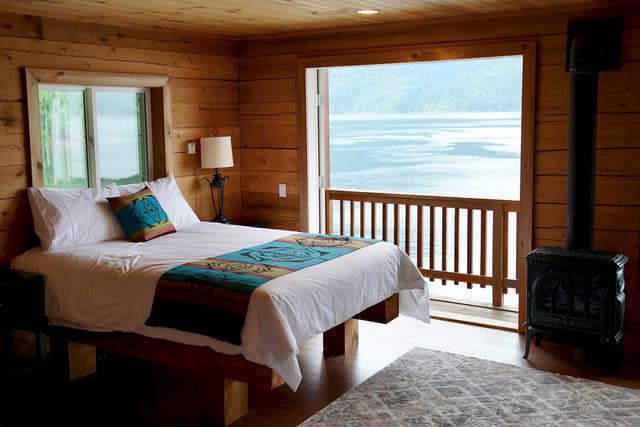
Courtesy of Klahoose Wilderness Resort
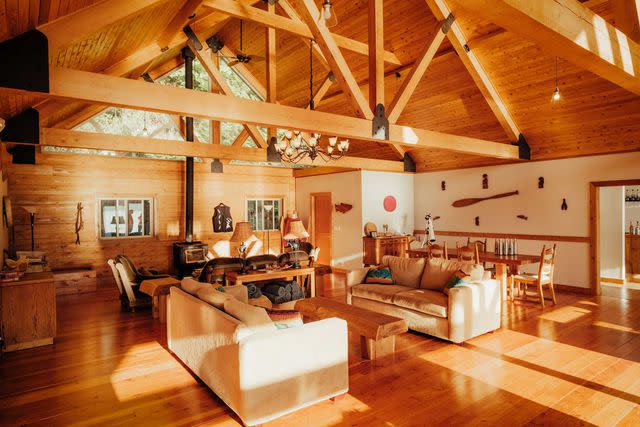
Courtesy of Klahoose Wilderness Resort
Our arrival was as epic as they come. On our CorilAir seaplane flight to Klahoose, we witnessed wind shadows creating delicate ripples on the sea, milky cloud reflections, log-strewn pebbly beaches, rocky islands, and a channel dotted with yachts and sailboats. Amid jagged mountains, midnight water, and mossy rocks, we landed smoothly and stepped onto a large dock holding an entire fleet of kayaks and paddleboards. This off-the-grid experience, which operates seasonally from May to October, is only accessible via seaplane or boat.
The Klahoose Nation purchased the property of three private cabins and four lodge rooms and reopened it in 2021 on a 2,400-foot-deep channel a one-hour boat ride from Toba Inlet, remote traditional land that’s home to wildlife such as grizzly bears.
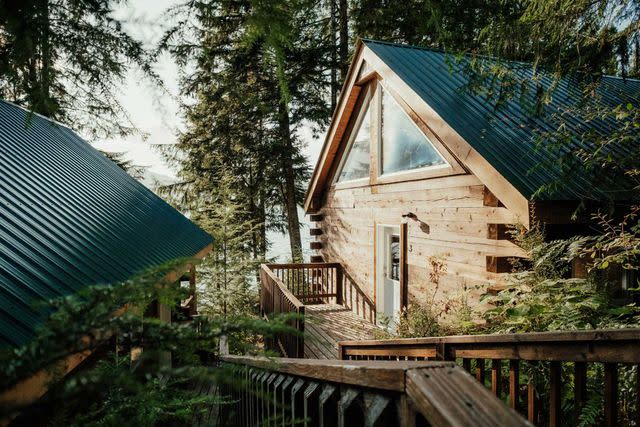
Courtesy of Klahoose Wilderness Resort
From start to finish, our all-inclusive experience was imbued with meaning. The brushing and cleansing ritual is something the staff first did during Pope Francis’s summer visit to Canada, to honor and heal the deep emotions it brought up. He’s been criticized for his woefully inadequate recognition of the church-run residential schools across Canada that I’m told were mandated “to wipe out the Indian in the child” from the 1870s to 1996. Thousands died at the schools and generations of trauma followed the emotional and physical abuse.
While in Vancouver before flying up, I’d taken an eye-opening Talking Trees walk through Stanley Park with the Indigenous-owned Talaysay Tours. And as we feasted in Salmon n’ Bannock — the single Indigenous-owned restaurant in the city — I’d teared up as owner Inez Cook told me her story of being forcibly taken as a baby and raised by a white family, then rediscovering her heritage through the restaurant and being reunited with her Nuxalk Nation.
I was grateful to have a bit of context while on the land of people who have endured so much, including a delivery of smallpox-infected Hudson Bay blankets I was told killed many in the 1920s, and a landslide in Brem Bay that buried more. There were once six longhouses — traditional gathering places used for teaching and honoring people and milestones — in Toba; today, there are zero.
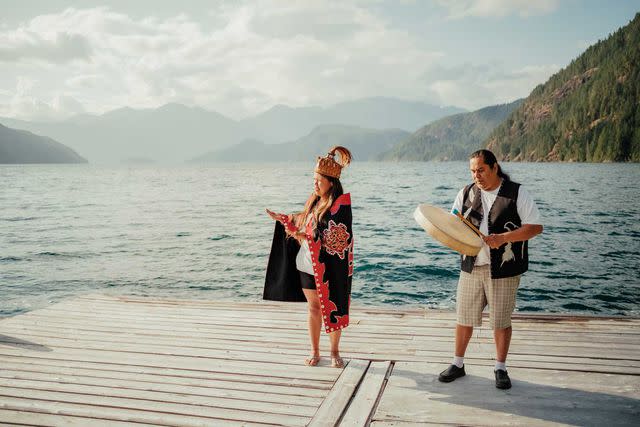
Courtesy of Klahoose Wilderness Resort
Awareness and storytelling, I think, are steps toward reconciliation. “The more they talk about it, I notice the tension is lightened up,” said Louie of the staff. And all the guests seem eager to learn, even when the truth is horrific. Through their jobs, the staff is also diving deeper into the culture, in some cases learning to drum and sing and carve for the first time.
Language preservation is also a hot topic right now in Canada, helped by teaching apps. “Our language is coming back strong,” Tla’amin grizzly guru, skipper, and cultural interpreter Leon Timothy told me. After dinner, we gathered around a big table, as Klahoose families would have in the past, to braid cedar roses with bark harvested during the damp spring. Another evening, we carved miniature paddles in soft red cedar wood.
Related: Getting to Know Indigenous Peoples in Canada Through Tourism
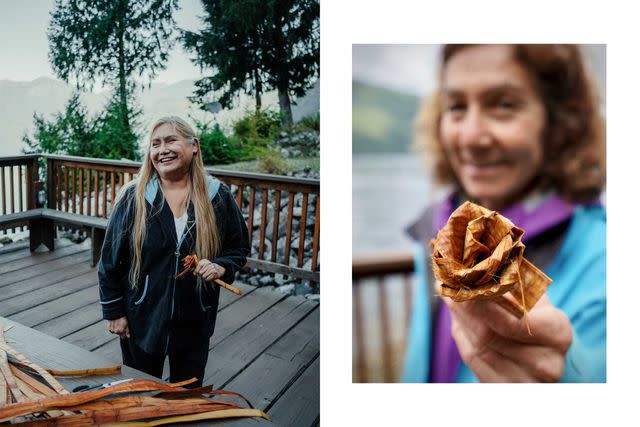
Courtesy of Klahoose Wilderness Resort
Crafts aside, there’s a summer camp vibe that encompasses sunny, active afternoons of water sports, sometimes alongside seals. Hiking is on a soft, mossy trail to an oyster-strewn point. One early morning while admiring the orange sun’s glow, we heard spouting, then spotted a humpback leisurely diving its way south, just in front of our cabin porch. The gorgeous creature seemed to enjoy swimming in the peaceful ocean as much as I did — warmer than I anticipated. A thundering waterfall, however, felt invigoratingly glacial when our boat captain steered us into its windy spray, like a baptism.
Zooming through channels and sounds — all turquoise water and gargantuan granite mountains — was surreal. But perhaps even more exciting was the potential of seeing grizzly bears at the end. From mid-August to mid-October, as the salmon spawn enticingly, the furry giants scoop them up to feast before hibernation. But they’re elusive, as I found over two-day trips to the Toba Valley during which Timothy, who’s worked on this land for three decades, drove us quietly through forest rich from the nutrients of fish scraps to wooden observation towers. “I’m not afraid of them, my family’s crest is a grizzly bear,” he said in a hushed voice to not scare off any animals. When we visited a totem later, Timothy said he’d like to come back as an eagle in his next life “because it’s good luck in our culture, every time you see one.”
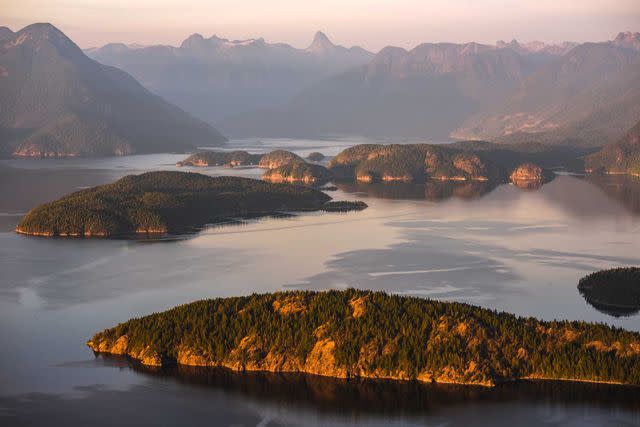
Andrew Strain/Courtesy of Destination British Columbia
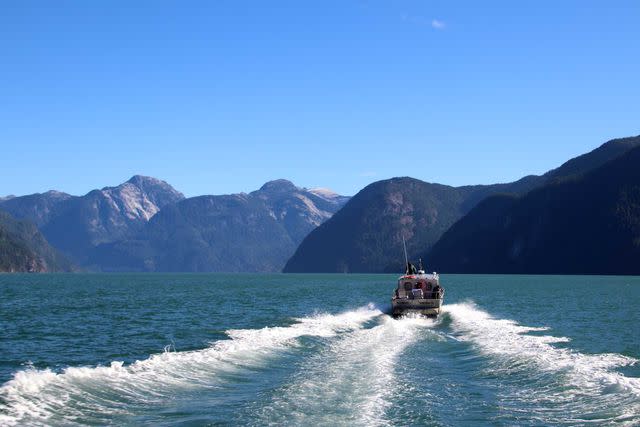
Kathryn Romeyn
Indeed it seems to be, because the next day a bald eagle flew overhead as we were silently searching. “They’re coming, I can feel it,” said Timothy. Louie effortlessly carved paddles all the while and told us about harvesting plants for medicine and the bears they’ve named, like Snorkel, who “likes to swim and use his hind legs to swoosh up the salmon.”
Finally, we heard loud splashing from upriver — a mama and her big baby were bounding around, trying to catch fish. She then started digging in a pile of logs, dust flying. They walked across the logs and climbed, mama’s nose in the air sniffing, on high alert — there was a dangerous male in the area, it seemed, and we spotted him later. Wildly protective, a mama bear will do everything in her power to protect and feed her young. Watching them, amazed, I felt connected to the universal behavior of mothers, as well as Klahoose’s reverence for grizzlies as protectors.
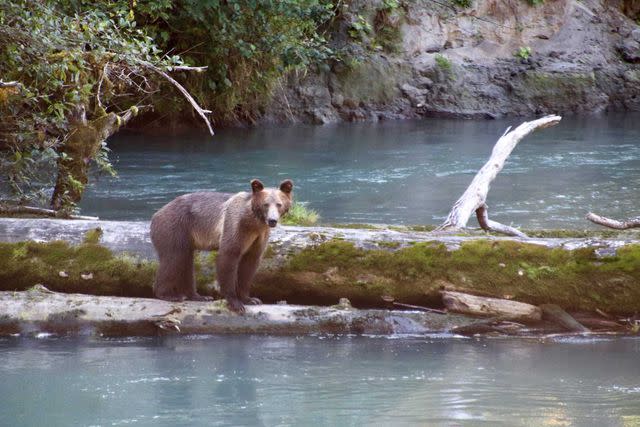
Kathryn Romeyn
“Residential schools took away a lot of the cultural practices we weren’t allowed to practice,” Louie told me later. Like here in Klahoose, they lost totem poles and longhouses — a lot of the teachings were almost forgotten. He reconnected with relatives in this area nine years ago (he’d spent a long time at a Coast Salish longhouse on Vancouver Island), and they made a 10-day canoe journey. “It was totally different from what I was used to. It’s a lot of discipline to paddle every day for eight hours,” Louie said, his gratitude palpable. “Now a lot of us are helping the elders by recording them, listening, and practicing.”
Klahoose is a place for travelers interested in people and their stories — nature and wildlife, too. For me, every part of my trip was enriched by the perspective I’d gained through encounters with both humans and animals. And the fact that the resort is owned by the First Nation of the same name made me feel like I was standing in solidarity with their mission as they work to share truths, heal wounds, and reclaim stolen land and knowledge. Louie summed it up perfectly: “If I was coming in here for someone else other than Klahoose, it wouldn’t feel the same at all, it would feel like a job.”
For more Travel & Leisure news, make sure to sign up for our newsletter!
Read the original article on Travel & Leisure.
